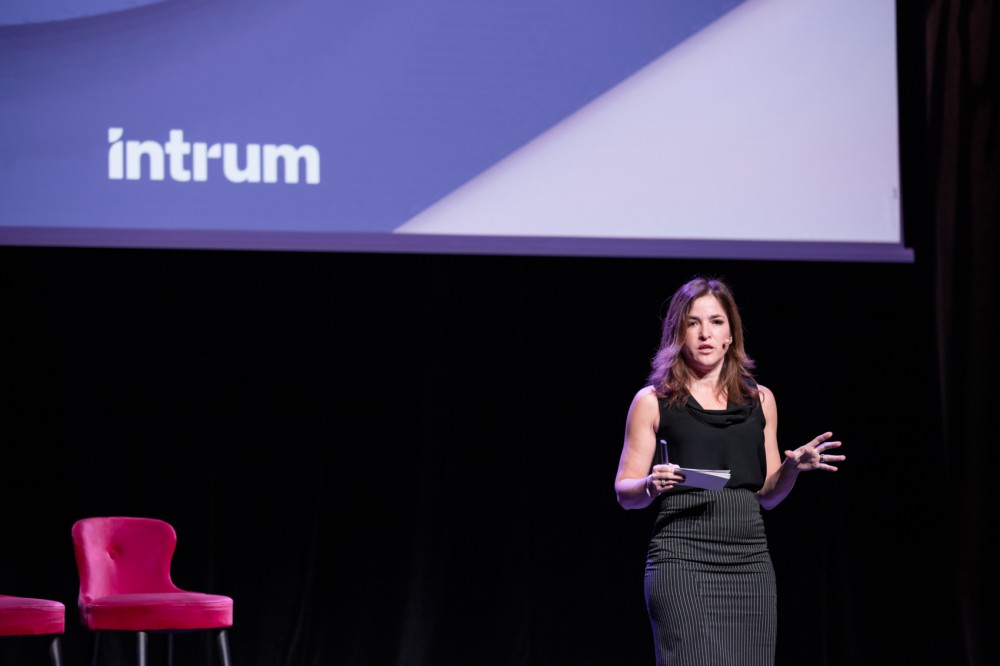Does it ever end?
The IT and business gap is a continuous topic of discussion. A lot of speakers at our summits have taken the time to share their experience and solutions for narrowing this gap that many times looks like an abyss. This time, we give attention to Dacil Ullman, Group Data Analytics Manager at Intrum, and Chairwoman at Nordic Women and Data Summit 2019. She presented on the constant struggle to bridge the gap between business and IT, and the Chief Analytics Officer who has the difficult role to execute it, at the Nordic Women and Data Summit 2018.
Working with gaps is not easy, but it’s especially difficult when a company spreads across 24 countries across in Europe like Intrum. So, we can be sure that Dacil 3 cents to share about gaps.


There are quite a few challenges that arise from this business-IT gap, but Dacil gives focus to two: communication and trust.
The two (not so) known reasons for the gap between business and IT
Data Scientists and Data Analysts are working in the communication gap
Communication (or miscommunication) is the first reason for the gap. It is essential for people to understand each other. We are good at the talking part, but when it comes to listening, it’s where we fail. On top of that, there are people with different levels of education, backgrounds, positions and even different languages in an organisation, which make communication a challenge.
Regardless if it’s written or oral communication, we are bad at transferring our thoughts in words. We are all caught up in our work that we forget that our domain jargon might not be familiar to our colleagues from other departments. And this is the first struggle with communication – people from non-technical backgrounds are more often than not, unfamiliar with analytics terms. Dacil points that that working in analytics it’s actually working in the gap between the technical and the business value.
So it’s that much important that data scientists and analysts should always bear this in mind and find a more common language when communicating.


Knowing SQL, R and other technical skills are important, but analysts should be also able to communicate, listen to what business wants to achieve, translate it into models and explain back the value. This is what is needed for successful analytics, Dacil affirms.
Purple people – a blend of blue (business) and red (technology)
Dacil mentions the term “purple people” coined by Wayne Eckerson, which refers to people that possess both business acumen and analytical abilities. Purple people are the perfect solution for bringing together business and IT, they can speak the business language and translate it into terms that IT can understand, and vice versa, help business see how to best make use of data and analytics tools to solve business questions.
Unfortunately, these people are very rare, if there are any. So what Dacil has created “a purple room” – a room that gathers business, IT and technical people on one table to discuss initiatives, so they can talk to each other, points out Dacil. After the meeting, which usually turns into a whole day workshop, everyone understands what they are trying to achieve. The start of every data and AI initiative has to be a common ground or a purple room, as Dacil likes to call it.
Trust between business and analytics
“Trust is the biggest challenge I have, every single day”, states Dacil. She shares an example, where the goal was to optimise a decision point in the organisation. The team of data scientists came in super enthusiastic about the project to the meeting equipped with machine learning models. But they were met by the not so enthusiastic business owner asking to be applied where it would have the least impact if things go awry. It’s worth mentioning that until that time, they were relying on random gut feeling for business decisions. But still the distrust was there and it originated from the fact that both sides were not on the same level. The data scientists were confident in their models and knew their value, but the business couldn’t part ways with their gut feeling.


“The gap from gut feeling to analytics is a huge one, and trust in technology is based in strong evidence”, declares Dacil. In order to instil trust in business, data scientists should have patience, because random gut feeling is the baseline that business had been relying on thus far.
Analysts are so confident with their technology that they sometimes forget that it takes time to catch on, as with any innovation in history, for example, the gas-powered car.
The right approach is to start small and provide evidence that a model works, but at the same time be aware that there is always risk involved in automated decisions.
It’s important that analytics and business are on the same page when new technology is implemented into the decision-making process – analytics to communicate the value and business to understand it.


Yes, the struggle can end if you abide by these two rules:
Improve communication – The key is to create a common ground for all key players, call it a purple room, or any other colour you like. The other part is to practice an open dialogue, so non-technical business users could feel free to raise questions when they don’t understand the domain terminology because only that way the gap can be narrowed.
Eliminate distrust – To establish trust, both sides need to be on the same floor and practice patience. Going from random gut feeling to data-based decisions takes time and building trust in it takes time. And the last thing Dacil emphasises is to be humble so that people feel like they can talk to you.

















Add comment